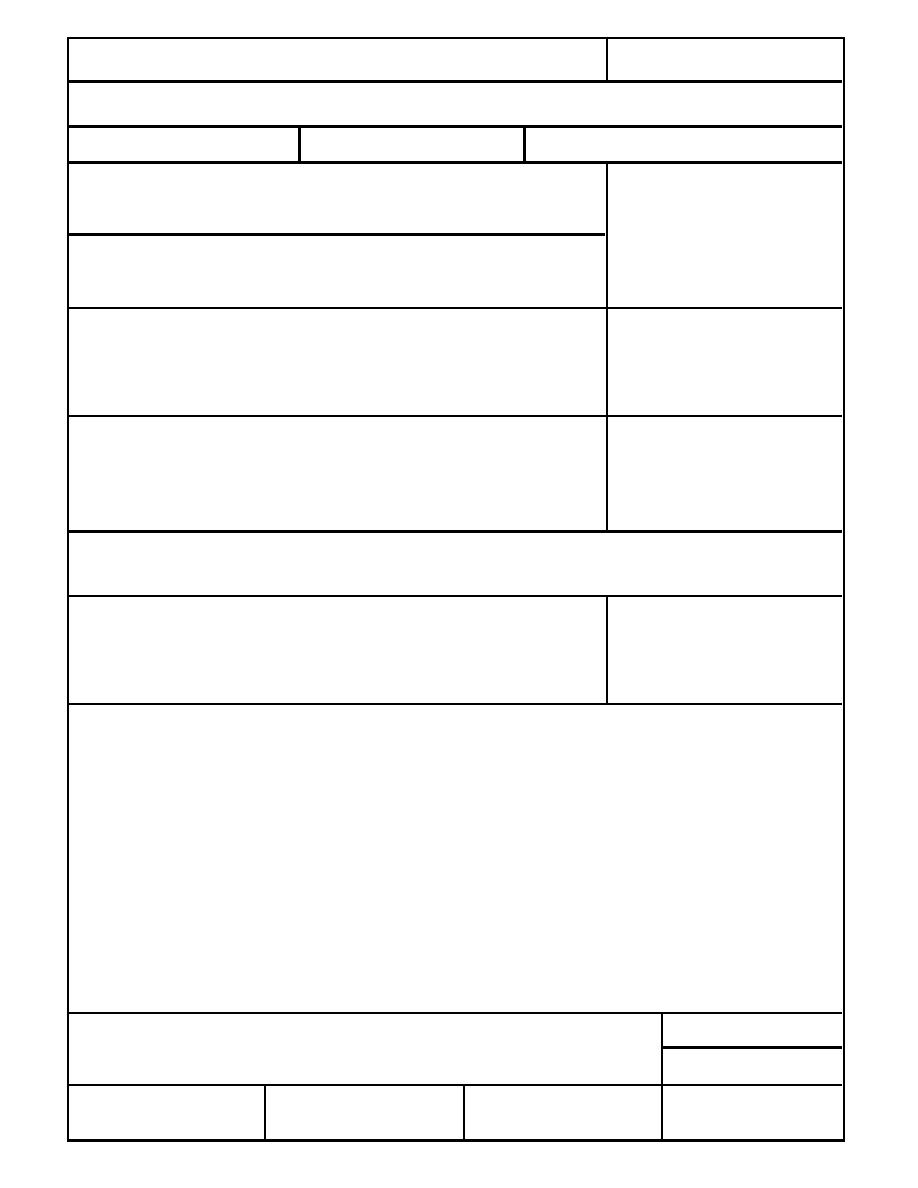
Form Approved
REPORT DOCUMENTATION PAGE
OMB No. 0704-0188
Public reporting burden for this collection of information is estimated to average 1 hour per response, including the time for reviewing instructions, searching existing data sources, gathering and
maintaining the data needed, and completing and reviewing the collection of information. Send comments regarding this burden estimate or any other aspect of this collection of information,
including suggestion for reducing this burden, to Washington Headquarters Services, Directorate for Information Operations and Reports, 1215 Jefferson Davis Highway, Suite 1204, Arlington,
VA 22202-4302, and to the Office of Management and Budget, Paperwork Reduction Project (0704-0188), Washington, DC 20503.
1. AGENCY USE ONLY (Leave blank)
2. REPORT DATE
3. REPORT TYPE AND DATES COVERED
September 1995
4. TITLE AND SUBTITLE
5. FUNDING NUMBERS
Evaluation of Clean Solid Phases for Extraction of
Nitroaromatics and Nitramines from Water
6. AUTHORS
Thomas F. Jenkins, Philip G. Thorne, Karen F. Myers, Erika F. McCormick,
Don E. Parker and B. Lynn Escalon
7. PERFORMING ORGANIZATION NAME(S) AND ADDRESS(ES)
8. PERFORMING ORGANIZATION
REPORT NUMBER
U.S. Army Cold Regions Research and Engineering Laboratory
72 Lyme Road
Special Report 95-22
Hanover, New Hampshire 03755-1290
9. SPONSORING/MONITORING AGENCY NAME(S) AND ADDRESS(ES)
10. SPONSORING/MONITORING
AGENCY REPORT NUMBER
U.S. Army Environmental Center
SFIM-AEC-ET-CR-95037
Aberdeen, Maryland
11. SUPPLEMENTARY NOTES
12a. DISTRIBUTION/AVAILABILITY STATEMENT
12b. DISTRIBUTION CODE
Approved for public release; distribution is unlimited.
Available from NTIS, Springfield, Virginia 22161.
13. ABSTRACT (Maximum 200 words)
Salting-out solvent extraction (SOE) was compared with cartridge and membrane solid-phase extraction (SPE) for
preconcentration of nitroaromatics, nitramines, and aminonitroaromatics prior to determination by reversed-phase
high-performance liquid chromatography. The solid phases used were manufacturer-cleaned materials: Porapak
RDX for the cartridge method and Empore SDB-RPS for the membrane method. Thirty-three groundwater samples
from the Naval Surface Warfare Center, Crane, Indiana, were analyzed using the direct analysis protocol specified
in SW846 Method 8330, and the results were compared with analyses conducted after preconcentration using SOE
with acetonitrile, cartridge-based SPE, and membrane-based SPE. For high-concentration samples, analytical re-
sults from the three preconcentration techniques were compared with results from the direct analysis protocol;
good recovery of all target analytes was achieved by all three preconcentration methods. For low-concentration
samples, results from the two SPE methods were correlated with results from the SOE method; very similar data
was obtained by the SOE and SPE methods, even at concentrations well below 1 g/L. The large chromatographic
interferences observed for the SPE methods in an earlier study using less clean materials were largely absent here.
A small interference was observed for both SPE methods at the retention time of RDX on the primary analysis col-
umn that translated to concentrations ranging from 0.2 to 0.6 g/L RDX. Detection limits for RDX should be raised
to 0.6 g/L if the SPE methods are used for preconcentration due to this potential interference. We recommend that
solid-phase extraction be included as an option in SW846 Method 8330 as well as SOE.
14. SUBJECT TERMS
15. NUMBER OF PAGES
14
Analysis
RDX
TNT
Salting out
Water
16. PRICE CODE
Preconcentration
Solid-phase extraction
17. SECURITY CLASSIFICATION
18. SECURITY CLASSIFICATION
19. SECURITY CLASSIFICATION
20. LIMITATION OF ABSTRACT
OF REPORT
OF THIS PAGE
OF ABSTRACT
UNCLASSIFIED
UNCLASSIFIED
UNCLASSIFIED
UL
Standard Form 298 (Rev. 2-89)
NSN 7540-01-280-5500
Prescribed by ANSI Std. Z39-18
298-102



 Previous Page
Previous Page
